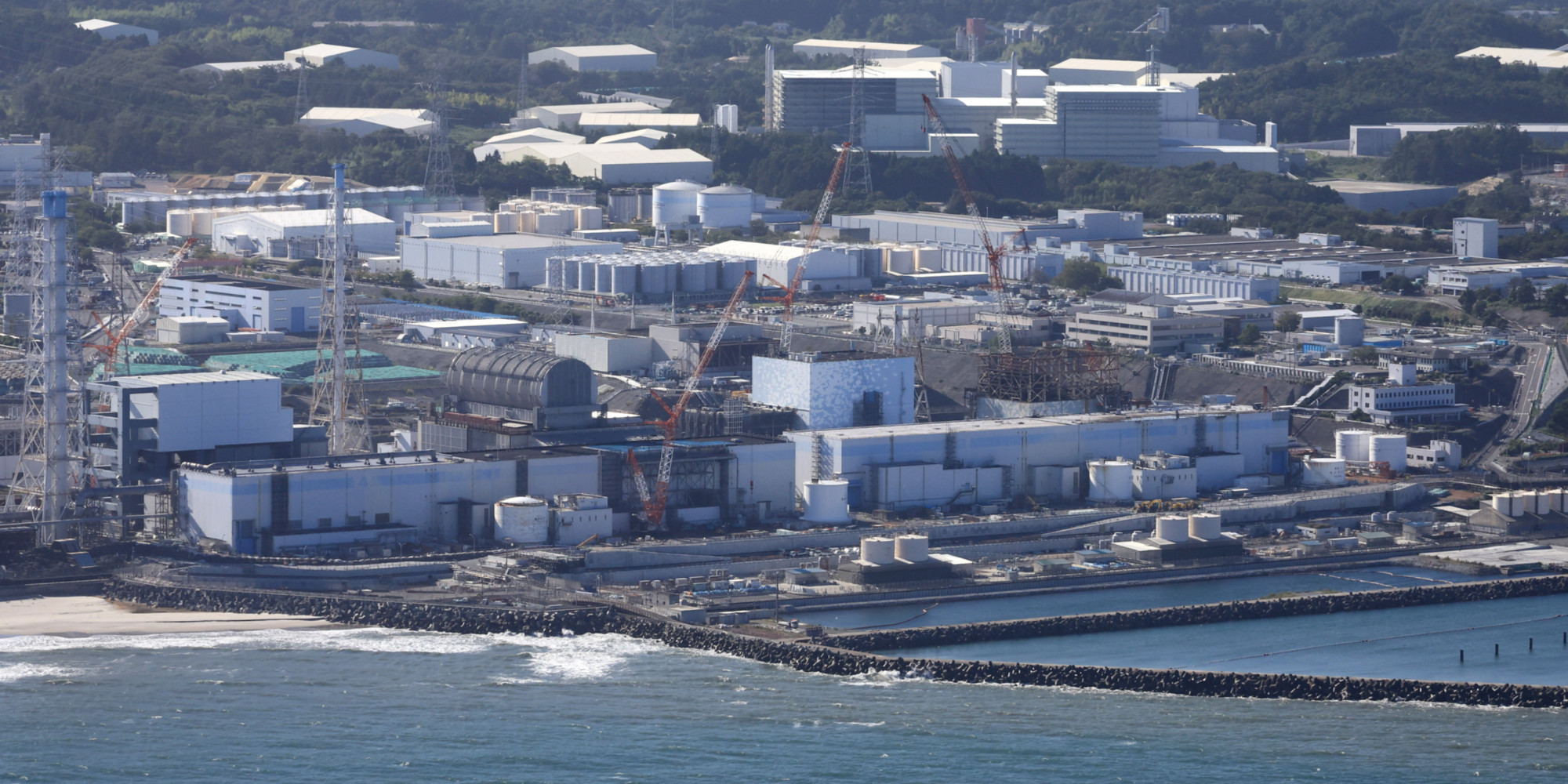Ophélie Artaud with AFP / Photo credit: Takuya Matsumoto / Yomiuri / The Yomiuri Shimbun via AFP
More than 1.3 million cubic meters of water discharged into Japanese waters by 2050. On Thursday August 24, Japan began discharging contaminated water from the Fukushima nuclear power plant, damaged following a tsunami in March 2011. A controversial decision, which should last almost 25 years. Details of this operation, environmental risks, international reactions… Europe 1 comes back to everything you need to know about the discharge of waste water from Fukushima.
How is the operation organised?
First of all, the water that will be discharged is that which was used to cool the molten tanks during the nuclear accident at the Fukushima power plant, which occurred following a tsunami on March 11, 2011. To this s add water from rain, as well as groundwater. Because 12 years after the disaster, the plant’s storage capacities are reaching saturation point.
The water that will be discharged is tritiated, ie filtered and freed of radioactive substances, except tritium. According to experts, this radioactive substance is not dangerous for the environment or human health if its concentration is very low. In all, Japan plans to discharge more than 1.3 million cubic meters of water from the Fukushima plant.
This plan was validated in early July by the International Atomic Energy Agency (IAEA), which oversees operations. The tritiated water will be discharged several times, and this, until 2050. For this first operation, which began this Thursday morning at 1 p.m. (Japanese time), 7,800 cubic meters will be discharged, all over a period of 17 days. Also, the tritiated water content in daily sea discharges will not exceed 500 cubic meters. The water will be very dilute, so that its level of radioactivity does not exceed 1,500 becquerels (Bq) per litre. A level 40 times lower than the Japanese national standard for tritiated water aligned with the international standard (60,000 Bq/litre), and also around seven times lower than the ceiling established by the World Health Organization (WHO) for tritiated water. drinking water (10,000 Bq/litre).
Are there any health or environmental risks?
Logically, the announcement of the discharge of these contaminated waters at sea caused a wide reaction. In addition to Japan’s neighboring countries, local fishermen, restaurateurs and environmental organizations are concerned about the possible consequences on the environment and health. If the water has been treated for the first time, only the tritium remains, which is impossible to remove with existing technologies. This substance can actually be harmful if it is inhaled or ingested in large quantities, which should not be the case with the waters of Fukushima, which will be discharged gradually.
If the scientific community remains divided on this subject, Thursday, the IAEA presented its “monitoring data from Japan on the discharge of treated water at the Fukushima Daiichi nuclear power plant”. According to the organization, during the safety review of treated water, “the IAEA concluded that the approach adopted by Japan and its activities of discharge of treated water are in accordance with the relevant international safety standards. The report indicated that the controlled and progressive releases of treated water into the sea, as currently planned and assessed by TEPCO [la société d’électricité japonaise propriétaire de Fukushima, NDLR]would have a negligible radiological impact on the population and the environment”.
The IAEA also ensures that it is continuing an “impartial, independent and objective review of the safety of Japan’s discharge of water stored at the Fukushima Daiichi nuclear power plant”. Also, water containing tritium is regularly discharged into the sea by nuclear power plants, all over the world.
Why are the people and neighboring countries of Japan worried?
While environmental organizations such as Greenpeace accuse the Japanese government of minimizing the risks of radioactive pollution, local fishermen are worried about the future of their profession. They are particularly afraid of no longer being able to sell their seafood products, whether in Japan or in the rest of the world.
This decision worries China, which denounces, on the first day of this operation, a “selfish and irresponsible” act. “The ocean is the common good of humanity. The forced dumping of contaminated water from the Fukushima nuclear power plant into the sea is an extremely selfish and irresponsible action that disregards the international public interest” , said the Chinese Ministry of Foreign Affairs in a press release.
Immediately this Thursday, China also decided to suspend all seafood imports from Japan. This decision, taken in the name of “food safety”, aims to “prevent the risks of radioactive contamination caused by the discharge into the sea of contaminated water”, Customs said in a press release.
If the concern is less great on the side of South Korea, which supported the operation, the country still asks Japan to “transparently publish” data on the impact of water discharges from Fukushima “for the next 30 years”. “I call on the Japanese government to publish release information transparently and responsibly over the next 30 years,” South Korean Prime Minister Han Duck-soo said on Thursday, while denouncing “false information” and demagoguery. about Japan’s decision. But in the country, several demonstrations were organized to denounce this operation. A dozen people were arrested on Thursday morning for trying to enter the Japanese embassy in Seoul.
Three other spills of contaminated water from Fukushima, with equivalent volumes, are expected to take place by March 2024.
